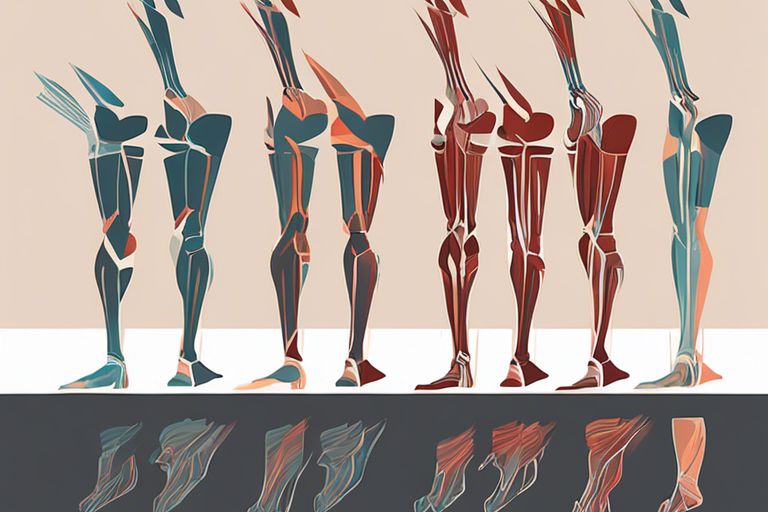Greetings, reader! Have you ever wondered about the profound impact walking can have on your cardiovascular health? In this blog post, we will delve into the ways in which walking positively affects your heart and overall cardiovascular well-being. With the rise of sedentary lifestyles and heart disease, it’s crucial to understand the dangerous consequences of inactivity, as well as the benefits of incorporating regular walks into your daily routine. Let’s explore the incredible power of walking for your heart health!
The Science of Walking and Heart Health
Before delving into the intricacies of how walking impacts cardiovascular health, it’s important to understand the basics of your cardiovascular system and how walking affects your heart.
Cardiovascular System Basics
Your cardiovascular system, also known as the circulatory system, is responsible for pumping blood throughout your body, delivering oxygen and nutrients to your organs and tissues. The heart, a powerful muscle, plays a central role in this system, pumping blood to all parts of your body through a network of blood vessels. Regular physical activity, such as walking, helps to keep your cardiovascular system in good shape, maintaining the health of your heart and blood vessels.
How Walking Affects the Heart
When you engage in regular walking, you are actually engaging in a form of aerobic exercise. This type of exercise increases your heart rate and improves the circulation of oxygenated blood throughout your body. Walking helps to strengthen your heart, making it more efficient at pumping blood and improving your overall cardiovascular health. Additionally, walking can help to lower your blood pressure, reduce your risk of developing heart disease, and improve your cholesterol levels.
By incorporating regular walking into your routine, you are actively taking steps to improve the health of your heart and reduce your risk of cardiovascular disease. The impact of walking on your heart health cannot be overstated, as it is a simple and effective way to keep your cardiovascular system in optimal condition. The positive effects of walking on your heart extend to other areas of your health, making it a valuable form of exercise for overall well-being.
Benefits of Regular Walking
Now that you understand the impact of walking on cardiovascular health, let’s delve into the specific benefits of incorporating this low-impact exercise into your daily routine.
Blood Pressure and Cholesterol
Regular walking can have a significant impact on your blood pressure and cholesterol levels. Studies have shown that walking for just 30 minutes a day can help lower your blood pressure and reduce LDL (bad) cholesterol, while increasing HDL (good) cholesterol. This can ultimately decrease your risk of heart disease and stroke.
Weight Management and Reduced Disease Risk
In addition to improving your blood pressure and cholesterol levels, regular walking can also help with weight management and reducing your risk of chronic diseases. By burning calories and increasing your metabolism, walking can aid in weight loss and maintenance. Furthermore, it has been linked to a lower risk of developing type 2 diabetes, certain cancers, and osteoporosis.
Walking Programs and Recommendations
After understanding the cardiovascular benefits of walking, you may be eager to integrate this form of exercise into your daily routine. Developing a walking program tailored to your fitness level and goals is crucial to reaping the maximum benefits for your cardiovascular health. Here are some essential guidelines to consider before you start your walking journey.
Developing a Walking Routine
When developing a walking routine, it’s important to start at a comfortable pace and gradually increase the duration and intensity of your walks. You may begin with 15-30 minutes of brisk walking a few times a week and then progress to longer walks as your fitness level improves. Setting achievable goals and tracking your progress can help you stay motivated and committed to your walking routine.
Guidelines for Different Fitness Levels
Regardless of your current fitness level, walking can be a valuable addition to your cardiovascular fitness regimen. If you are a beginner, start with shorter, low-intensity walks and gradually increase your pace and duration. For intermediate and advanced fitness levels, incorporating interval walking, hills, or adding weights to your walks can help challenge your cardiovascular system and improve your overall fitness. It’s important to listen to your body and incorporate rest days into your routine to avoid overexertion.
Addressing Common Barriers to Walking
Despite the numerous benefits of walking for cardiovascular health, many people still encounter barriers that prevent them from engaging in this simple and effective form of exercise. Common barriers include psychological hurdles, environmental and physical challenges, lack of time, and safety concerns. In this chapter, we will address some of these barriers and offer solutions to help you overcome them and incorporate more walking into your daily routine.
Overcoming Psychological Hurdles
One of the most common psychological hurdles that prevent people from walking is the belief that it is not an effective form of exercise. You may feel that walking is not intense enough to make a difference in your cardiovascular health. However, research has shown that brisk walking can significantly improve cardiovascular fitness and reduce the risk of heart disease. Additionally, some people may feel self-conscious or embarrassed about walking, especially if they are not used to regular exercise. It’s important to remind yourself that walking is a simple and natural form of physical activity that can benefit your heart health. Changing your mindset and acknowledging the positive impact that walking can have on your cardiovascular health can help you overcome these psychological hurdles.
Managing Environmental and Physical Challenges
Environmental and physical challenges can also pose barriers to walking. If you live in an area with limited sidewalks or walking paths, you may feel unsafe or uncomfortable walking outside. Additionally, physical limitations such as chronic pain or mobility issues can make it difficult to engage in regular walking. However, there are solutions to these challenges. You can explore alternative walking routes in your area or consider joining a walking group for added safety and companionship. If physical limitations are a concern, you can consult a healthcare professional to develop a walking plan that is suitable for your individual needs. By taking these steps, you can manage environmental and physical challenges and make walking a regular part of your cardiovascular health routine.
Summing up the Impact of Walking on Your Cardiovascular Health
By incorporating walking into your daily routine, you can significantly improve your cardiovascular health. Walking helps to strengthen your heart and improve circulation, lowering your risk of heart disease and stroke. It also helps to control blood pressure and cholesterol levels. Furthermore, walking can aid in weight management, reducing strain on your heart and enhancing overall cardiovascular function. So, lace up your shoes and take that first step toward a healthier heart!




